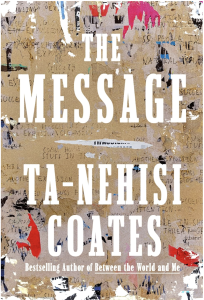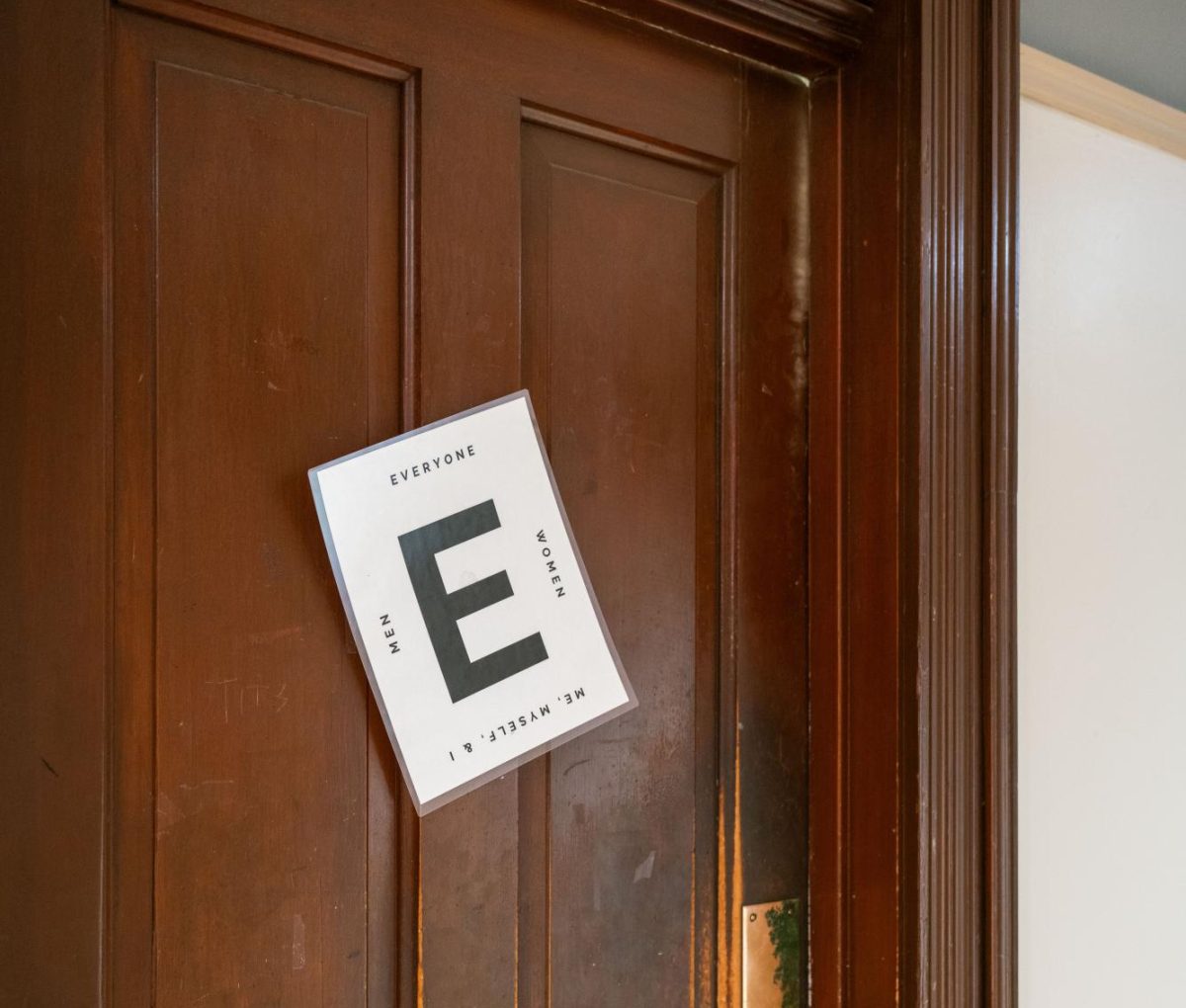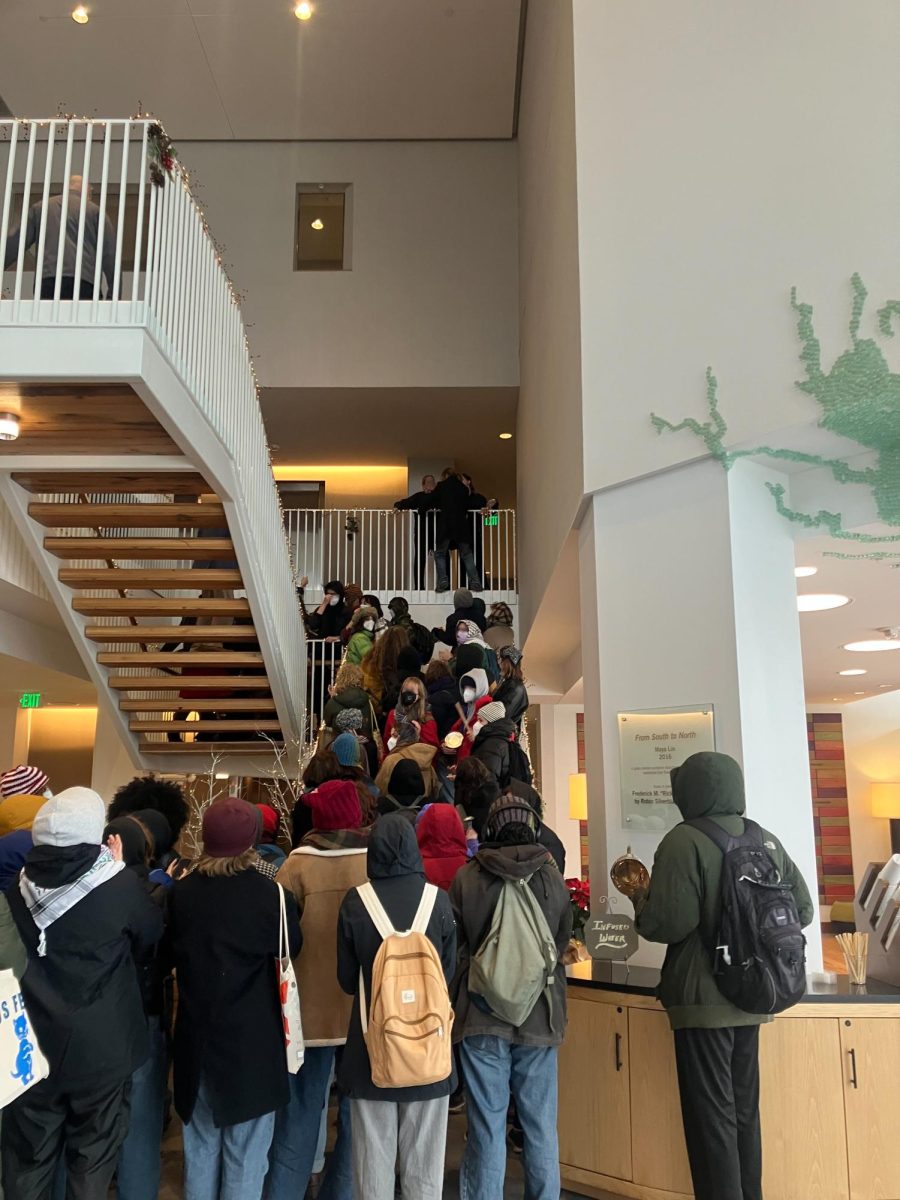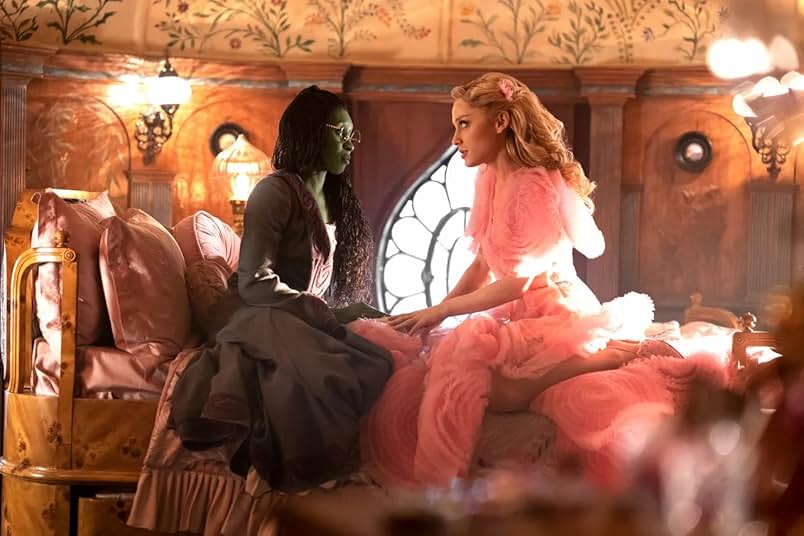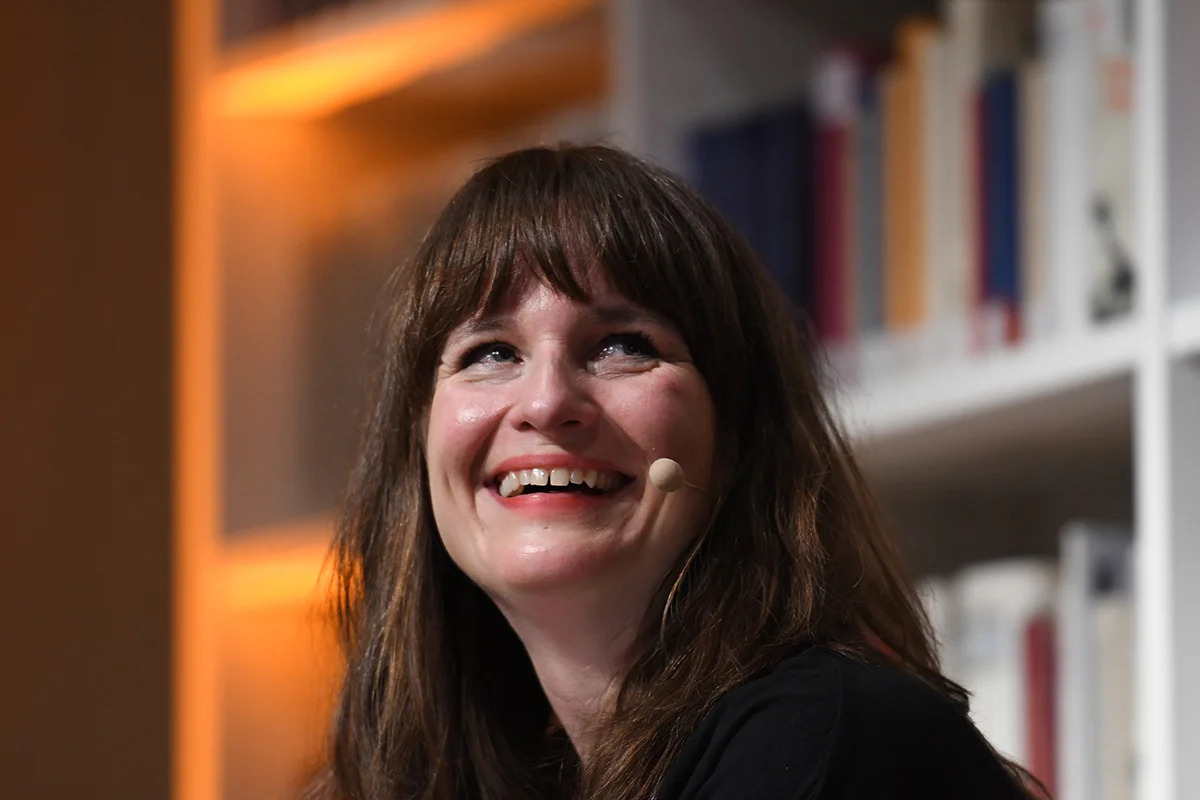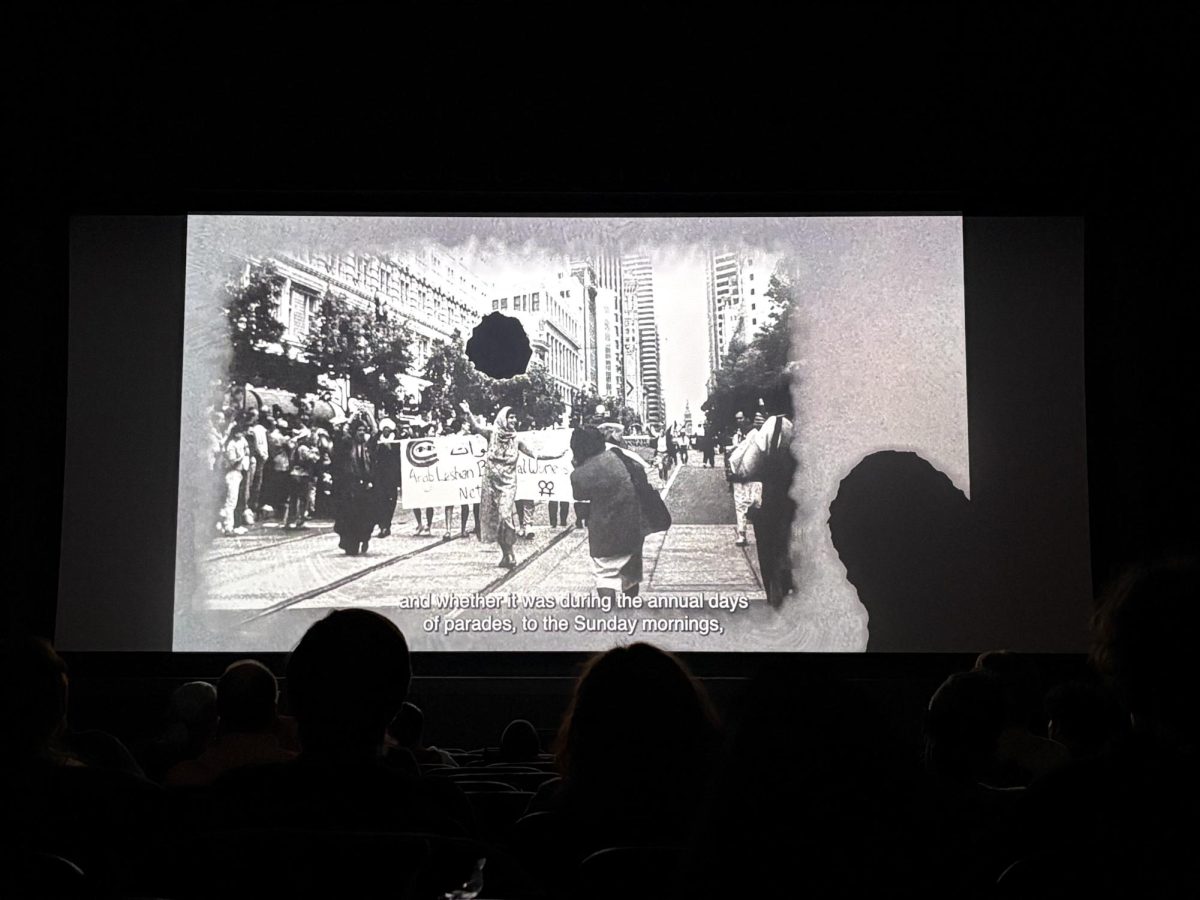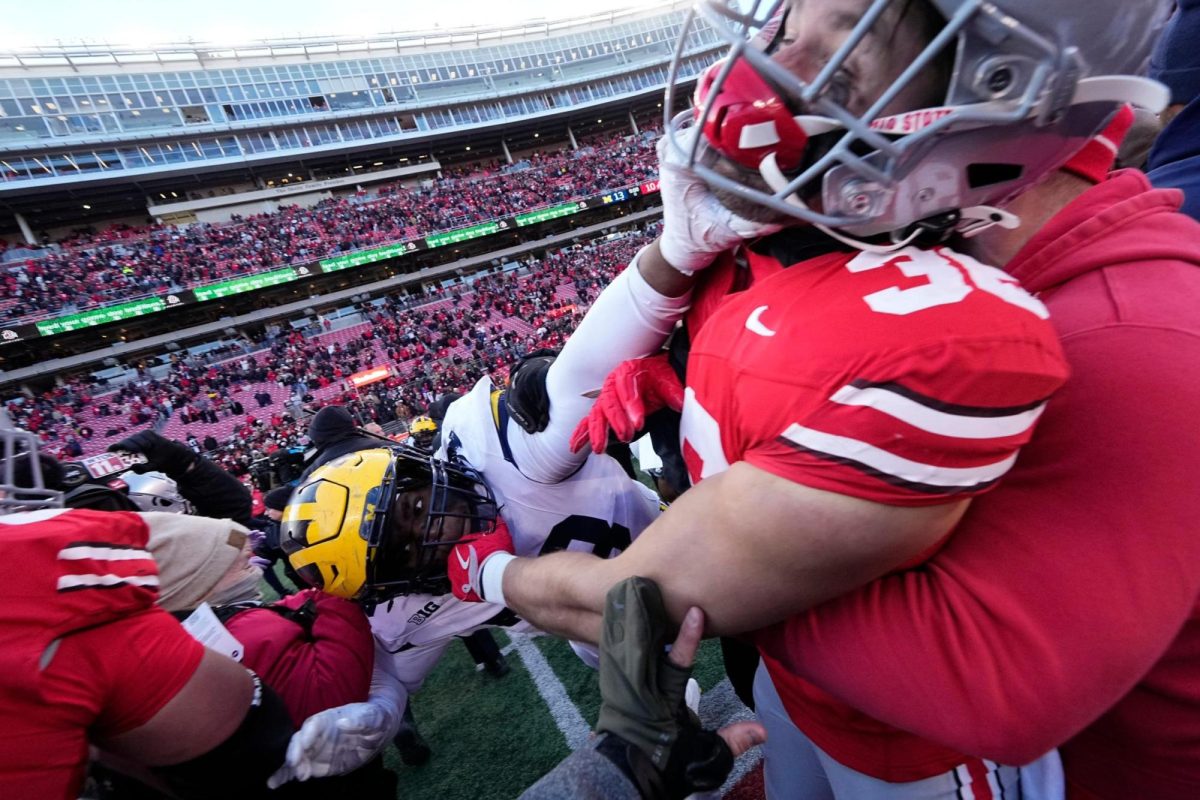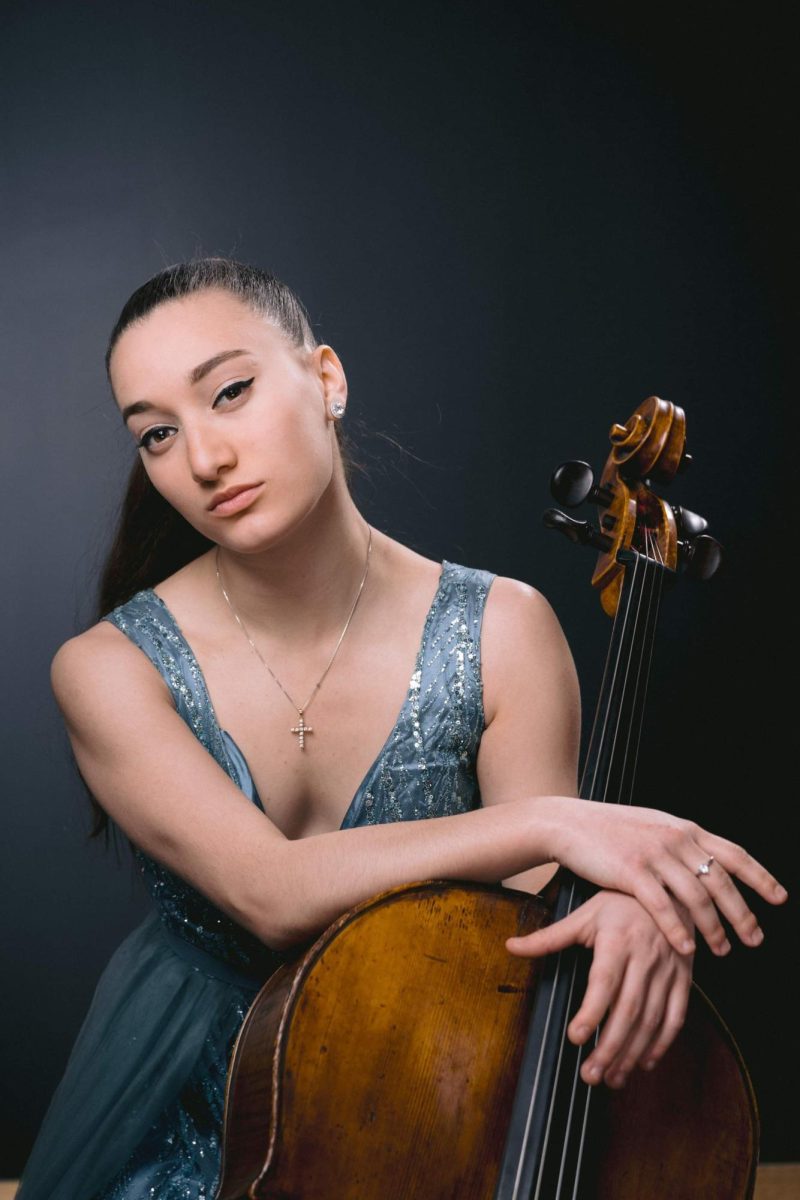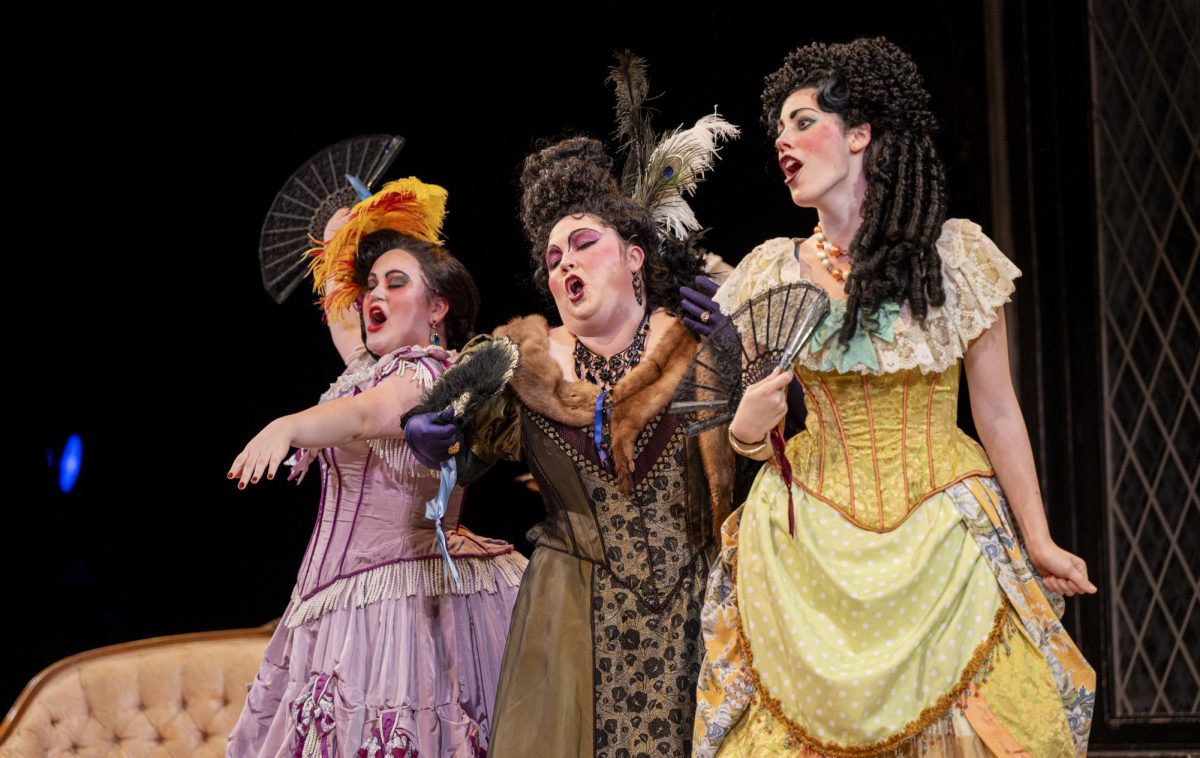Halloween Burlesque Treats Audience, Bodies with Respect
November 4, 2016
The Oberlin Burlesque Halloween-themed performance was a treat — quite literally, since the show opened with the audience being pelted by candy. The team took the stage in front of a packed ’Sco at 10 p.m. Monday to deliver a performance that both capitalized on the evening’s spooky theme and celebrated the multiplicity of body expression.
According to College junior Russell Jaffe, who danced in Monday’s show, the variety of acts on display is at the core of burlesque.
“I’d say that [burlesque is] a seductive dance in a really specific art style that’s one part cabaret, two parts seduction, a dash of variance and maybe a … touch of stripping,” Jaffe said.
College sophomore Katya Bouazza-Salva, who also appeared on stage, expanded on the variety of music that can be interpreted in burlesque.
“It doesn’t necessarily have to be the theme of cabaret,” she said. “A lot of people do songs to hip hop or rock ’n’ roll.”
For Bouazza-Salva, performing in burlesque shows has been a meaningful experience.
“I think that … people think about stripping as very degrading,” she said. “For me, burlesque is the opposite. I used to be very self-conscious about my body, and burlesque has helped me not be that as much. … To get up on that stage and take off your clothes in front of all those people takes a lot, and I think it forced me to be comfortable with myself. For me, burlesque is empowerment.”
Oberlin Burlesque has been a chartered organization of the College for two years now. Team president and founding member Jackie Meger, a graduate student of the Conservatory pursuing a Masters in Music Teaching, spoke to the Review about what burlesque means for her and her aspirations for the team.
“My attachment to burlesque is very personal. … I did not come into college with a good body image, and it took a lot of work to feel confident in myself,” she wrote in an email to the Review. “After having danced in a few shows, my confidence in my body and my personality have both been strengthened. As the president of the organization, my goal is to help anybody and everybody feel the same way about sharing their bodies and ideas with their fellow students — with pride, confidence and a feeling of support.”
That support was clear at the ’Sco Monday night, as the audience, encouraged by the MC at the beginning of the show, clapped and cheered along to every number.
“I always get nervous before a show,” Bouazza-Salva said. “I always feel like I have to work out … because I don’t want people to see my stomach or I don’t want people to think my legs are weird. But when you’re in the show and you take that first piece of clothing off and you hear the audience [cheering], it gives you a rush. You think, ‘Who cares about the way I look? People are liking this. I look sexy as f—.’ It doesn’t matter if I’m not a Victoria’s Secret model. I can still rock it as much as they can.”
Though people may hold stigmatized notions of what burlesque is or is supposed to be, for Oberlin’s team, it is all about empowerment and celebration.
“Burlesque is sexy without being about sex,” Jaffe said. “It allows you to express your body in whatever way you want, as much or as little as you want, and you’re the one who’s in control of it. No one is telling you what to do or expecting it from you. You get to choose. Frankly, that’s something society could take a lesson from.”
Bodily expression took many forms in Monday’s show. Alongside stripping, which is what burlesque is better known for in the wider community, the performance also included dancing, singing and a tumbling act.
“Our shows have acts of all kinds, decided by each group,” Meger wrote in an email to the Review. “Comedy, serious acts, solos, groups, singing, dancing, acting, improvisation — you name it — we’ve got it all. There is no level of nudity required, but students can choose to go as nude as the school allows. … There are also many acts where there is just one costume, and nothing is getting added … or removed.”
Many of the show’s numbers also took advantage of the Halloween theme. The show opened to the theme from The Addams Family and featured Ghostbusters, devils and gravestones, as well as other themed numbers. While every number was the result of much planning and rehearsal, for Meger, the most meaningful part of the show was the mutual support that she felt from all her team members.
“Before the show, in the dressing room, during the show, after the show — it was all love,” she wrote in an email to the Review. “We are all rooting for each other, working together and finding ways to make the organization better and stronger with every show. … [I] improvised my dancing solo, which I had never done before. And just like the rest of the show, I got unending support.”
Meger’s experience is in line with the show’s mission statement, which focuses on building a space for safe expression and growth.
“Oberlin Burlesque is a judgment-free and all-gender dance and performance group dedicated to body positivity and self-love,” it reads.
Meger also recognizes the importance of financial accessibility for team members.
“Our shows and organization have never required members to pay for anything, including their costumes,” she wrote. “There is a lot of closet sharing — people will ask their friends for stuff, trade clothes, or take from my personal costume stash. … Starting this year, we also have a budget from the [Student Finance Committee] for costumes and makeup, and that is incredibly exciting!”
There are no experience requirements for joining the team, Meger emphasized.
“None of us have had any burlesque training, and very few of us have had dance training,” she wrote. “Everything is also done ‘in-house,’ meaning that we choreograph our own dances without bringing in an outside person. … There are no experience requirements, and no restrictions on becoming a member.”
Jaffe stressed the idea of empowerment, which seems to be the ethos of the burlesque team, reflecting on their hope that people will perceive their performance positively.
“[Burlesque is] definitely worth a shot,” they said. “I feel like a lot of people have a preconceived idea of it — that it’s just classy stripping — and it’s really not. In my dance [in Monday’s performance], I don’t even take off my clothes. It’s more about empowerment. So people should give it a chance before they judge it.”
For Bouazza-Salva, one exciting aspect of Monday’s performance was how much interest it generated among audience members to become more involved with the team.
“I had a lot of first-years come up to me [after the show] so they can join the next show,” she said. “That made me really happy. I think it would be good if everybody tried it once in their life, to be honest.”


